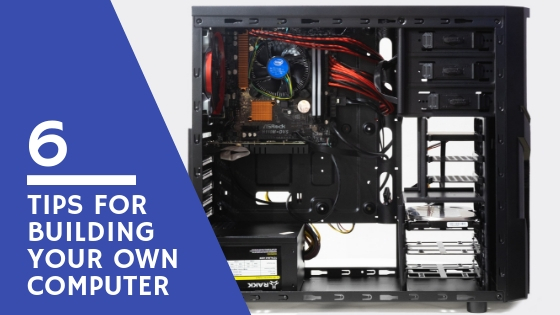For many people, they see ways they can improve their current computer or wish it had a feature that isn’t available. While it’s possible to purchase highly sophisticated and customized pieces of tech, it’s also possible to make some of these changes on your own. Many people are opting to build their own computers, which provides room to customize the technology to fit the user’s specific needs. It can be challenging to figure out this process, especially if it’s your first time building a PC. If you’re thinking of building your own computer, here are some tips to make it as easy as possible.
Plan out what you’ll use it for
Before you begin purchasing parts and start building, take the time to figure out exactly what you want to use your PC for. Depending on your intended use, you’ll need to get different parts and invest in certain aspects of the build. Do research online to find out what parts are best suited to your needs. For example, if you’re planning on using your PC for gaming, you’ll need specific parts to make that experience as sophisticated as possible.
Talk to experienced builders
It’s likely that you know someone who has already built their own computer; ask around and talk to them about their experience. You can also go online and take a look at popular forums that feature discussions on building your own computer.
Figure out your budget
One of the most important parts of figuring out how to build your computer is determining your budget. While it can be done at a pretty affordable cost, some aspects of it can get expensive and you’ll need to know ahead of time how much money you can spend and what parts are going to be the most costly.
Test your parts
While most parts you’ll receive are going to be reliable, you should make sure they all work before securing them into your new computer. Test each one out so you know it’s not a dub. If there is an issue, you’ll be able to replace it as soon as possible and save time.
Make sure it doesn’t overheat
When building your own PC, you need to make sure that it doesn’t overheat. Too many builders do not give sufficient thought to the airflow of their computers, which can lead to issues down the road. Have your fans all blow in the same direction and aim to create positive air pressure in your computer, which helps prevent too much dust from building up.
Give yourself time
Finally, give yourself plenty of time to build your computer. If you’ve never done it before, it’ll take a bit of time to figure out how everything fits together and what’s the best design to use. Avoid rushing yourself; it’s better to take longer and have a higher quality computer than to quickly have a PC that isn’t working as well as it could.

